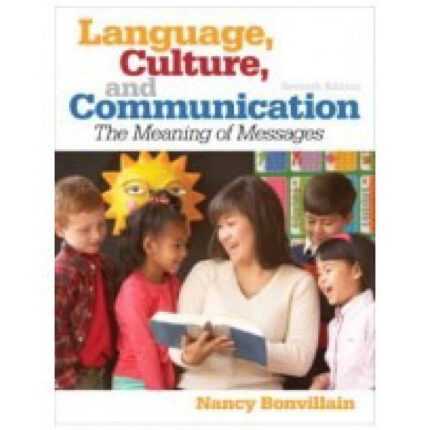Language Disorders in Children 2nd Edition by Joan N. Kaderavek – Test Bank
TEST BANK
Chapter 11 Multicultural Issues
Multiple Choice Questions
1. An ethnic group is a group of individuals who share
a. A common language.
b. Heritage.
c. Religion.
d. Geography/nationality.
e. One or more of the above.
2. The social practices, beliefs, values, and behaviors that members of a group use to communicate and interact are known as
a. Cultural sensitivity.
b. Cultural reflection.
c. Cultural framework.
d. Cultural bias.
e. Cultural dialogue.
3. Understanding that ones way of speaking or interacting is no more right or sensible that the interactions of another ethnic group is demonstrates
a. Cultural sensitivity.
b. Cultural reflection.
c. Cultural framework.
d. Cultural bias.
e. Cultural dialogue.
4. Recognizing that you are a product of the beliefs, values, and social-political history of your own ethnic group is
a. Cultural sensitivity.
b. Cultural reflection.
c. Cultural framework.
d. Cultural bias.
e. Cultural dialogue.
5. The fact that more than half of SLPs’ clientele are non-European American ethnic minorities, while the majority of SLPs are of European-American descent, is an example of
a. Ethnic bias.
b. Ethnic diversity.
c. Ethnic mismatch.
d. Ethnic profiling.
e. Ethnic cleansing.
6. The challenges of working with children from other ethnic minority groups include all of the following, except
a. The lack of SLPs from ethnic minority groups.
b. The European cultural framework.
c. SLPs not prepared to treat or intervene with families who live in poverty.
d. SLPs are not trained to properly diagnose and treat ethnic minority children.
e. The lack of appropriate assessment tools.
7. Individualist cultures operated from a European cultural framework and focuses on all of the following, except
a. Independence.
b. Self-confidence.
c. Immediate family.
d. Group decisions.
e. Individual achievement.
8. Collectivist cultures that focus on interdependence between members include
a. African.
b. Asian.
c. Latino.
d. Native American.
e. All of the above.
9. Maintaining one’s own cultural identity while accepting the values and beliefs of the European American tradition is known as
a. Bilingualism.
b. Bidialectism.
c. Acculturation.
d. Separation.
e. Marginalization.
10. The assessment protocols for children from ethnic minorities should feature all of the following, except
a. The child’s native language.
b. Items on phonology and syntax.
c. Process-oriented measures.
d. Test-teach-retest approach.
e. Assessment of learning behaviors.








Reviews
There are no reviews yet.